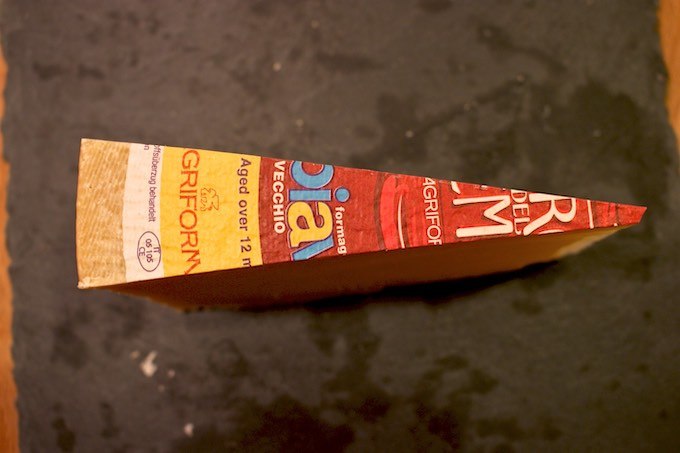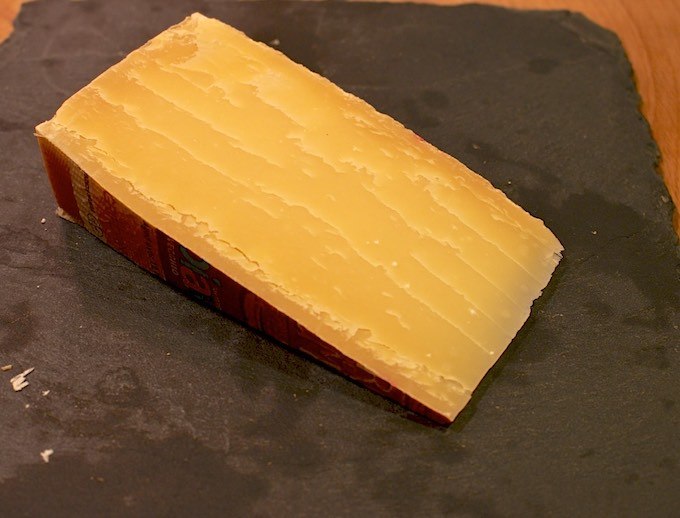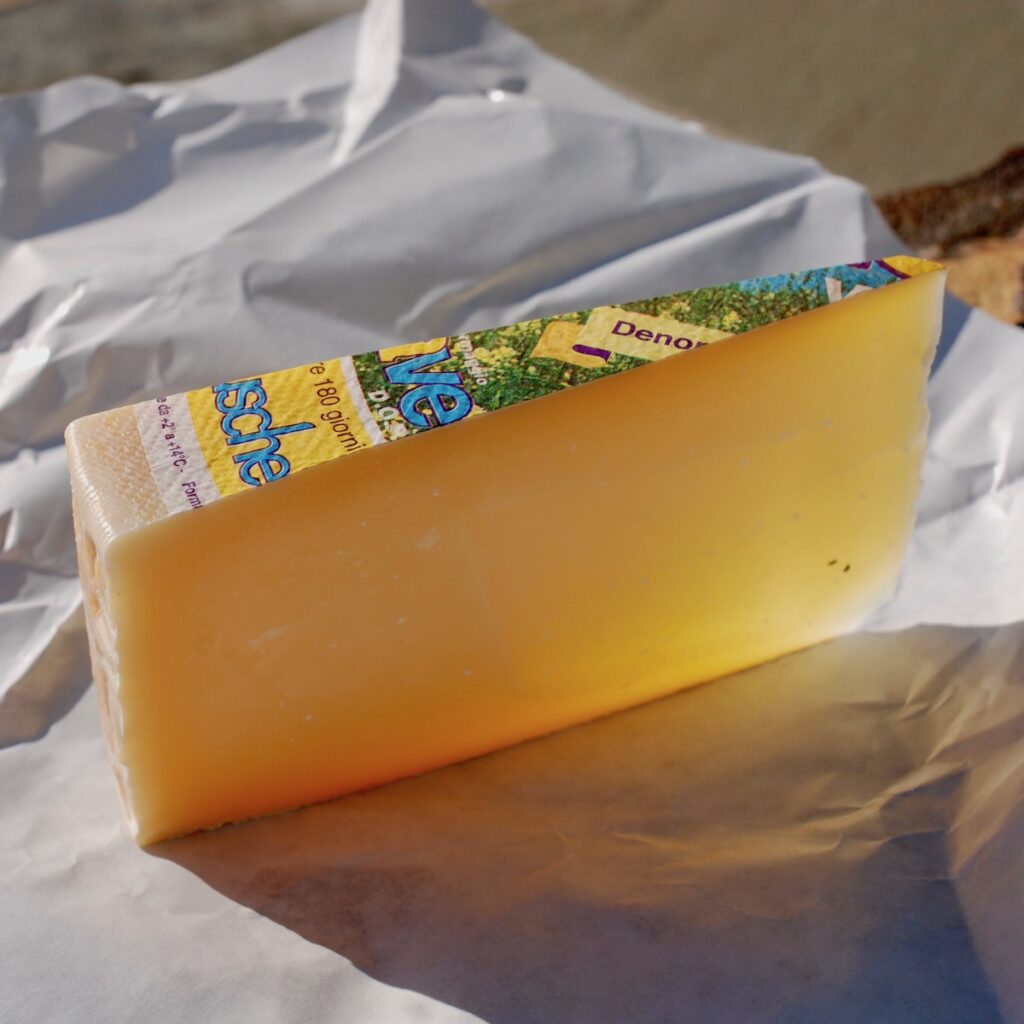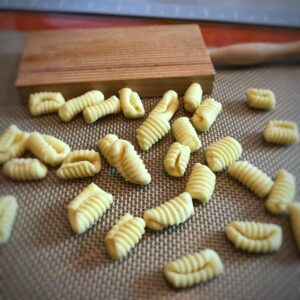All About Piave Vecchio from Italy
If you like Parmigiano- Reggiano and aged Gouda, you will love Piave Vecchio.
Piave Vecchio is a renowned Italian cheese with a rich heritage and exceptional flavor. Hailing from the Veneto region in northeastern Italy, this aged cow’s milk cheese captivates the palate with its distinctive character.
The name “Piave” derives from the river that flows through the region, infusing the cheese with a unique terroir. Piave Vecchio undergoes a minimum aging period of one year, resulting in a crumbly texture and a robust, nutty taste.
Its golden hue and delightful aroma further enhance the sensory experience. Perfect for cheese aficionados, Piave Vecchio is a true masterpiece embodying traditional Italian craftsmanship and culinary excellence.
Piave Ages
- Piave Fresco (20 to 60 days aging – blue label)
- Piave Mezzano (61 to 180 days aging – blue label)
- Piave Vecchio (more than 6 months aging – blue label
- Piave Vecchio Selezione Oro (more than 12 months aging – red label)
- Piave Vecchio Riserva (more than 18 months aging – black label).
All Piave cheeses are aged in special temperature and humidity-controlled cellars. They are regularly brushed and scraped and turned throughout the aging process.
I tried the Piave Vecchio Red Label and highly recommend this Italian mountain cheese for your next cheese board. It’s also great for grating and is a beautiful substitute for Parmesan cheese.
What Is Its History?
Piave Vecchio cheese has a fascinating history rooted in the Veneto region of Italy. The cheese comes from the Piave River, which runs through the area. It was created in the early 20th century as a way to preserve surplus milk and prevent waste.
Piave Vecchio is made using cow’s milk from the local Bruna and Frisona breeds. The production process involves heating and curdling the milk, which is left to age for at least one year. The cheese develops its unique flavor profile and distinctive characteristics during this time.
Over the years, Piave Vecchio has gained significant recognition and popularity, both in Italy and internationally. It has become a symbol of Italian culinary tradition and craftsmanship, often celebrated for its versatility in cooking and its ability to elevate a wide range of dishes.
Today, Piave Vecchio continues to be produced using traditional methods, ensuring the preservation of its historical roots and the integrity of its flavor. It stands as a testament to the rich cheese-making heritage of the Veneto region and remains a beloved staple in the world of Italian gastronomy.
Milk Source

The Short of Piave Vecchio Red
Milk Type: pasteurized cow’s milk
Region: Belluno Dolomites area
Country: Italy
Type: Hard
Shape: Round
Wheel Weight & Height: 15 pounds – 2 inches tall
Rind: Natural
Color: Golden Yellow
Paste: Sweet and Crystalline
Taste: Sweet, fruity, slight bitterness
Aroma: Yogurt and Milk
Aging Time: 12 months or more
Texture: Dense
Rennet: Animal
Producers: Lattebusche Sca
What Does Piave Vecchio Taste Like?
Piave Vecchio is known for its exceptional flavor that captivates the taste buds. It has a distinct and robust taste with sweet and nutty notes. The aging process imparts a rich complexity to the cheese, resulting in a deep and intense flavor profile.
The taste is often described as buttery, hinting at caramel, toasted nuts, and a slight tang. Piave Vecchio’s texture is crumbly and granular, similar to a well-aged Parmesan cheese. Its unique taste and texture make it a versatile cheese that can be enjoyed independently, grated over dishes, or paired with various accompaniments.

What Does It Smell Like?
Piave Vecchio cheese has a delightful aroma that adds to its sensory experience. The smell is often described as inviting and enticing. It carries a distinct, sweet fragrance with subtle hints of caramel and toasted nuts.
As the cheese ages, the aroma intensifies, developing more pronounced earthy and savory notes. When you approach a wheel or a slice of Piave Vecchio, you may be greeted by a pleasant and aromatic bouquet that gives a glimpse into the rich flavors that await. The aroma of Piave Vecchio contributes to the overall enjoyment of the cheese and adds to its allure on the cheese board or in the kitchen.
What Do You Serve With Piave Vecchio?
It is a versatile cheese that pairs well with a variety of accompaniments. Here are some suggestions for serving it:
- Fruits: Enjoy it with fresh or dried fruits such as grapes, apples, pears, or figs. The sweetness and juiciness of the fruits complement the nutty and savory flavors of the cheese.
- Nuts: Serve it with an assortment of nuts, such as walnuts, almonds, or hazelnuts. The nuts’ crunch and richness provide a delightful contrast to the cheese.
- Honey: Drizzle a touch of honey over Piave Vecchio to enhance its sweetness and create a harmonious balance of flavors.
- Bread and Crackers: Pair the cheese with crusty bread or crisp crackers. Their neutral flavors provide the perfect canvas for the cheese to shine.
- Chutneys or Jams: Accompany Piave Vecchio with chutneys or jams, such as fig jam or onion marmalade. The combination of sweet and savory flavors creates a delectable contrast.
- Italian Antipasti: Incorporate Piave Vecchio into a traditional Italian antipasti platter alongside cured meats, olives, marinated vegetables, and bruschetta.
- Wine: Enjoy Piave Vecchio with a glass of red wine, such as a full-bodied Cabernet Sauvignon or a fruity Chianti. The wine’s tannins and acidity complement the cheese’s flavors.
Remember, these suggestions are just a starting point. You can experiment with different combinations to find your personal favorite.
What Is Its Denomination and How Does That Protect its Name?
Piave Vecchio cheese has a Protected Designation of Origin (PDO) status, a form of geographical indication protection granted by the European Union. This recognition ensures that the name “Piave Vecchio” can only be used for cheese produced in a specific region and according to traditional methods.
The PDO designation protects Piave Vecchio’s name and safeguards its reputation and quality. It guarantees that the cheese is made using traditional recipes and techniques, using milk sourced from the designated region, and following strict production standards.
With this protected status, Piave Vecchio is safeguarded from imitation or misuse of its name. Consumers can trust that when they purchase Piave Vecchio with the PDO label, they are getting an authentic product with a distinct flavor and character tied to its geographical origin and traditional production methods.

Online Source: Cheese
I would encourage you to find a good cheese shop near you so you can get to know your cheesemongers, and they will get to know you. However, if you don't have a good local cheese shop or they don't have some of the cheeses, I recommend checking out Di Bruno Bros. online. Di Bruno Brothers is close to home to me. They have been in Philadelphia since 1939 and prided themselves on bringing fantastic food to the city of Philadelphia and drawing food lovers together in their ‘home.’ They also have a store outside Philly where I get most of my cheese and cured meats. If you can't find a particular cheese in your market, most likely, Di Bruno Bros. will.









One Response
It looks very yummy.Thanks for sharing such a delicious recipe with us.